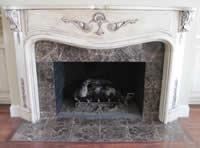|
High Efficiency Furnace Custom Search A high efficiency furnace installed in your home will increase your comfort and energy savings. The most common used heating system for a residential home is a forced-air natural gas furnace which distributes warm air through a duct system. Some other fuels that can be used for combustion are propane (LPG which is liquefied petroleum gas), fuel oil, coal or wood. There are also electric furnaces which use electric resistance heaters; however these have much higher energy costs to heat your home.
Any combustion furnace will always need to be vented to the exterior of the home. This is needed since the flue gases could contain carbon monoxide (a deadly gas). Furnaces used to vent up a chimney that was built up through the roof, however a high efficiency furnace can be vented out a plastic pipe since so little heat is lost through the flue gases. A furnace’s efficiency, also known as it’s AFUE (Annual Fuel Utilization Efficiency) is measured by its ability to convert its fuel to usable heat for the home. The minimum efficiency rating for furnaces today is 78% AFUE (which means 78% of the heat is transferred into the home and only 22% is lost through its exhaust) and then the high efficiency models are 90% & higher with an efficiency rating as high as 98% (only a 2% loss!!!).
Any home furnace works basically the same way. The fuel (gas, propane, oil, etc) is ignited/burned which creates the heat, this heat (the combustion gases) pass through a heat exchanger (except for electric heat), then to the exterior and the blower passes the air from your home across this heat exchanger transferring the heat into the air, then blows this air back into your home at a warmer temperature, which is why its called a forced-air furnace. The typical temperature rise of a modern gas furnace is 30F to 50F. This means if the indoor temperature is 70F, then the air blowing out of your supply registers in the home will be 100F to 120F.
|
Building Tip
"When considering which fireplace to chose for your new home, do not pick the ventless fireplace. Since there is no chimney, all of the fumes go into the home and the smell can be unbearable."

The above gorgeous fireplace is ventless gas logs. Although just as beautiful as a real fireplace, not as desirable.
INSPIRING THOUGHT
"Unless you try to do something beyond what you have already mastered, you will never grow."
~ Ralph Waldo Emerson
